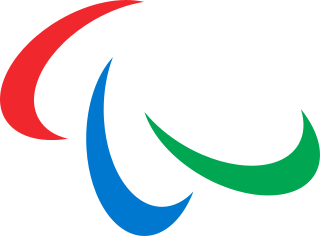| gender | Event | Class | AQS/MQS | BQS | Event |
| men's | 100m | T38 | 15.5 | | 2016 IPC Athletics Asia-Oceania Championships [21] |
| women's | 100m | T38 | 17 | | 2016 IPC Athletics Asia-Oceania Championships |
| men's | 100m | T38 | 00:12.8 | | 2016 CAIXA Loteria Athletics Open Championship |
| women's | 100m | T38 | 00:18.0 | | 2016 CAIXA Loteria Athletics Open Championship |
| men's | 100m | T38 | 12.5 | | 2015 IPC Athletics World Championships |
| women's | 100m | T38 | 15 | | 2015 IPC Athletics World Championships |
| men's | 100m | T38 | 13.1 | | 2016 IPC Athletics European Championships [22] |
| women's | 100m | T38 | 15.8 | | 2016 IPC Athletics European Championships [22] |
| men's | 100m | T38 | 13.25 | | 2014 IPC Athletics European Championships |
| women's | 100m | T38 | 15.8 | | 2014 IPC Athletics European Championships |
| men's | 100m | T38 | 16 | 13 | 2016 IPC Athletics Asia-Oceania Championships |
| men's | 100m | T38 | 13.5 | | 2015 Parapan American Games [23] |
| women's | 100m | T38 | 16.5 | | 2015 Parapan American Games |
| men's | 1500m | T37/38 | 05:20.0 | | 2016 IPC Athletics Asia-Oceania Championships |
| men's | 1500m | T38 | 05:00.0 | | 2015 IPC Athletics World Championships |
| men's | 1500m | T37/38 | 05:10.0 | | 2016 IPC Athletics European Championships [22] |
| men's | 1500m | T37/38 | 05:00.0 | | 2014 IPC Athletics European Championships |
| men's | 1500m | T37/38 | 05:20.0 | 04:55.0 | 2016 IPC Athletics Asia-Oceania Championships |
| men's | 1500m | T37/38 | 05:10.0 | | 2015 Parapan American Games |
| men's | 200m | T38 | 31 | | 2016 IPC Athletics Asia-Oceania Championships |
| women's | 200m | T38 | 37 | | 2016 IPC Athletics Asia-Oceania Championships |
| men's | 200m | T38 | 25.2 | | 2015 IPC Athletics World Championships |
| women's | 200m | T38 | 32 | | 2015 IPC Athletics World Championships |
| men's | 200m | T38 | 27 | | 2016 IPC Athletics European Championships [22] |
| women's | 200m | T38 | 33.6 | | 2016 IPC Athletics European Championships [22] |
| men's | 200m | T38 | 27 | | 2014 IPC Athletics European Championships |
| men's | 200m | T38 | 31 | | 2016 IPC Athletics Asia-Oceania Championships |
| men's | 200m | T38 | 27 | | 2015 Parapan American Games |
| women's | 200m | T38 | 35 | | 2015 Parapan American Games |
| men's | 400m | T38 | 01:10.0 | | 2016 IPC Athletics Asia-Oceania Championships |
| women's | 400m | T38 | 01:25.0 | | 2016 IPC Athletics Asia-Oceania Championships |
| men's | 400m | T38 | 01:00.0 | | 2016 CAIXA Loteria Athletics Open Championship |
| women's | 400m | T38 | 01:25.0 | | 2016 CAIXA Loteria Athletics Open Championship |
| men's | 400m | T38 | 58 | | 2015 IPC Athletics World Championships |
| women's | 400m | T38 | 01:10.0 | | 2015 IPC Athletics World Championships |
| men's | 400m | T38 | 01:05.0 | | 2016 IPC Athletics European Championships [22] |
| women's | 400m | T38 | 01:19.0 | | 2016 IPC Athletics European Championships [22] |
| men's | 400m | T38 | 01:05.0 | | 2014 IPC Athletics European Championships |
| women's | 400m | T38 | 01:20.0 | | 2014 IPC Athletics European Championships |
| men's | 400m | T38 | 01:10.0 | 01:00.0 | 2016 IPC Athletics Asia-Oceania Championships |
| men's | 400m | T38 | 1.07.00 | | 2015 Parapan American Games |
| women's | 400m | T37/38 | 01:20.0 | | 2015 Parapan American Games |
| women's | 4 × 100 m | T35-38 | ranking | | 2016 IPC Athletics European Championships |
| women's | 4 × 100 m | T35-38 | nil | | 2014 IPC Athletics European Championships |
| men's | 800m | T37/38 | 2.30.00 | | 2016 IPC Athletics Asia-Oceania Championships |
| men's | 800m | T37/38 | 02:18.0 | | 2015 IPC Athletics World Championships |
| men's | 800m | T37/38 | 02:30.0 | | 2016 IPC Athletics European Championships |
| men's | 800m | T37/38 | 02:30.0 | | 2014 IPC Athletics European Championships |
| men's | 800m | T37/38 | 02:30.0 | | 2016 IPC Athletics Asia-Oceania Championships |
| men's | discus | F38 | 25.00m | | 2016 IPC Athletics Asia-Oceania Championships |
| women's | discus | F38 | 16.00m | | 2016 IPC Athletics Asia-Oceania Championships |
| women's | discus | F37/38 | 22.00m | | 2015 IPC Athletics World Championships |
| women's | discus | F38 | 18.00m | | 2016 IPC Athletics European Championships |
| men's | discus | F37/38 | 37.00m | | 2014 IPC Athletics European Championships |
| women's | discus | F37/38 | 18.00m | | 2014 IPC Athletics European Championships |
| men's | discus | F38 | 25.00m | | 2016 IPC Athletics Asia-Oceania Championships |
| women's | discus | F38 | 25.00m | | 2015 Parapan American Games |
| men's | javelin | F38 | 26.00m | | 2016 IPC Athletics Asia-Oceania Championships |
| men's | javelin | F38 | 35.00m | | 2015 IPC Athletics World Championships |
| men's | javelin | F37/38 | 32.00m | | 2016 IPC Athletics European Championships |
| men's | javelin | F37/38 | 32.00m | | 2014 IPC Athletics European Championships |
| men's | javelin | F38 | 30.00m | 30.00m | 2016 IPC Athletics Asia-Oceania Championships |
| women's | javelin | F38 | 20.00m | | 2015 Parapan American Games |
| men's | long jump | T38 | 4.00m | | 2016 IPC Athletics Asia-Oceania Championships |
| women's | long jump | T38 | 3.60m | | 2016 IPC Athletics Asia-Oceania Championships |
| men's | long jump | T38 | 4.7 | | 2016 CAIXA Loteria Athletics Open Championship |
| men's | long jump | T38 | 5.00m | | 2015 IPC Athletics World Championships |
| women's | long jump | T38 | 3.90m | | 2015 IPC Athletics World Championships |
| men's | long jump | T38 | 4.20m | | 2016 IPC Athletics European Championships |
| women's | long jump | T38 | 3.60m | | 2016 IPC Athletics European Championships |
| men's | long jump | T38 | 4.50m | | 2014 IPC Athletics European Championships |
| women's | long jump | T38 | 3.50m | | 2014 IPC Athletics European Championships |
| men's | long jump | T38 | 4.00m | 4.40m | 2016 IPC Athletics Asia-Oceania Championships |
| men's | long jump | T38 | 4.40m | | 2015 Parapan American Games |
| women's | long jump | T38 | 3.50m | | 2015 Parapan American Games |
| men's | shot put | F38 | 9.00m | | 2016 IPC Athletics Asia-Oceania Championships |
| women's | shot put | F38 | 5.40m | | 2016 IPC Athletics Asia-Oceania Championships |
| men's | shot put | F38 | 10.00m | | 2015 IPC Athletics World Championships |
| men's | shot put | F38 | 9.00m | | 2016 IPC Athletics European Championships |
| men's | shot put | F38 | 9.00m | | 2014 IPC Athletics European Championships |
| women's | shot put | F38 | 8.00m | | 2015 Parapan American Games |








